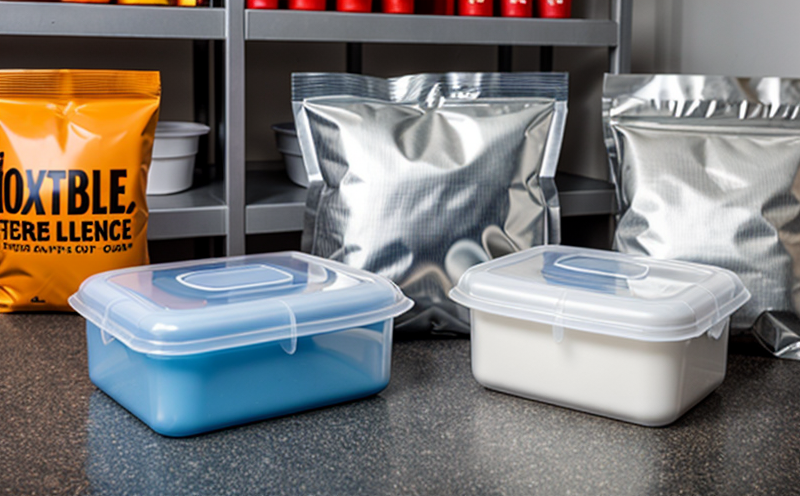ASTM D2732-12 Puncture Resistance Measurement
The ASTM D2732-12 standard provides a method to measure the puncture resistance of flexible packaging materials. This is critical for ensuring that packages can withstand external mechanical stress without compromising their integrity, thus protecting the products they contain.
Puncture resistance testing is essential in various industries where flexibility and protection are paramount. For instance, it is used in food packaging to prevent contamination from outside sources such as dirt or insects. In pharmaceuticals, it ensures that the product remains sterile until use. The test measures how much force is required to puncture a specimen of material using a sharp needle under specified conditions.
The procedure involves preparing a sample cut to specific dimensions and placing it on a rigid platform. A needle is then lowered onto the center of this sample, applying increasing loads in small increments until penetration occurs. The load at which penetration happens determines the puncture resistance value. It's important that samples are conditioned appropriately before testing to reflect real-world conditions.
The ASTM D2732-12 test is widely used because it provides a standardized way of assessing material performance across different manufacturers and suppliers, ensuring consistent quality control. This measurement helps identify materials with superior resistance properties which can enhance the overall durability of packaging solutions.
Understanding the puncture resistance characteristics allows for better design decisions when selecting appropriate barrier films or laminates in multi-layered structures. By knowing how resistant a material is to punctures, manufacturers can optimize their designs to balance cost efficiency with necessary protection levels.
This testing method plays an integral role not only within individual companies but also at industry standards bodies like ASTM International who set out such protocols for wide adoption across sectors involving flexible packaging. Compliance with this standard ensures that products meet regulatory requirements and consumer expectations regarding safety and quality.
Scope and Methodology
| Aspect | Description |
|---|---|
| Test Specimens | The specimens should be cut to dimensions as specified in the standard. They must also be conditioned under controlled temperature and humidity conditions prior to testing. |
| Instrumentation | A specialized puncture tester capable of applying incremental loads until penetration occurs is required for accurate measurements. |
| Load Application | The load increases in small increments until the material gives way to the puncturing needle. The critical load at which this happens indicates the puncture resistance value of the material. |
| Data Recording | All relevant data points including maximum load, displacement during penetration, and other parameters are recorded for analysis. |
Industry Applications
The ASTM D2732-12 puncture resistance measurement has broad applicability across numerous industries that rely on flexible packaging materials. In the food industry, it ensures freshness and safety by maintaining product integrity against environmental factors like air exposure or physical damage during transport.
Pharmaceutical companies use this test to guarantee sterility throughout the supply chain until final delivery. Retailers benefit from enhanced protection against tampering which builds consumer trust in their brands. Additionally, it supports compliance with international regulations governing packaging standards.
Aerospace and defense sectors also utilize these tests due to stringent requirements for lightweight yet robust packaging that can endure harsh conditions without compromising on performance or safety features.
Competitive Advantage and Market Impact
Companies investing in ASTM D2732-12 puncture resistance testing gain significant competitive advantages. By accurately determining the strength of their packaging materials, they can make informed decisions about material selection that balance cost-effectiveness with optimal protection.
This knowledge enables businesses to innovate more effectively by exploring new combinations of base films and coatings, thereby creating unique offerings tailored specifically towards meeting customer needs better than competitors. Moreover, adherence to this standard enhances brand reputation as it demonstrates commitment to quality assurance practices recognized globally.
The market impact extends beyond individual firms; when entire supply chains align with these standards, there's a collective improvement in overall industry performance. This fosters trust among end users who rely heavily on reliable packaging solutions for critical applications like healthcare products or perishable goods.





